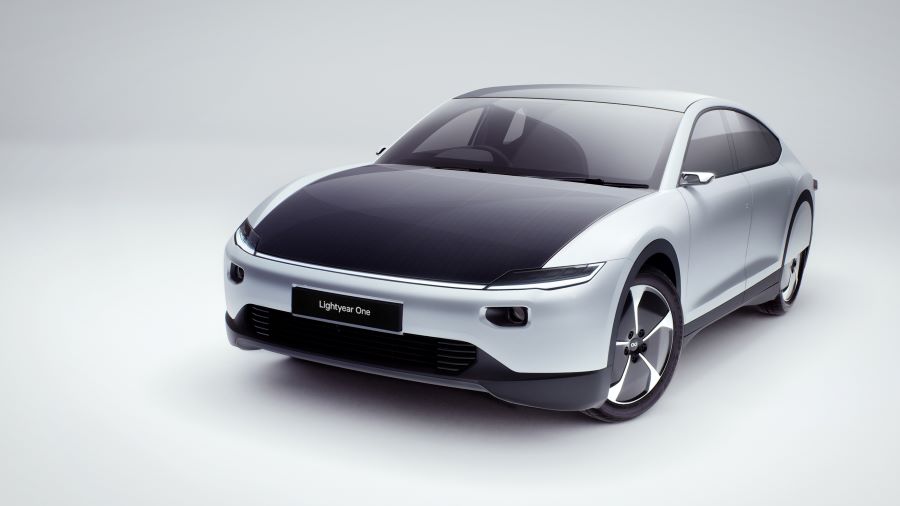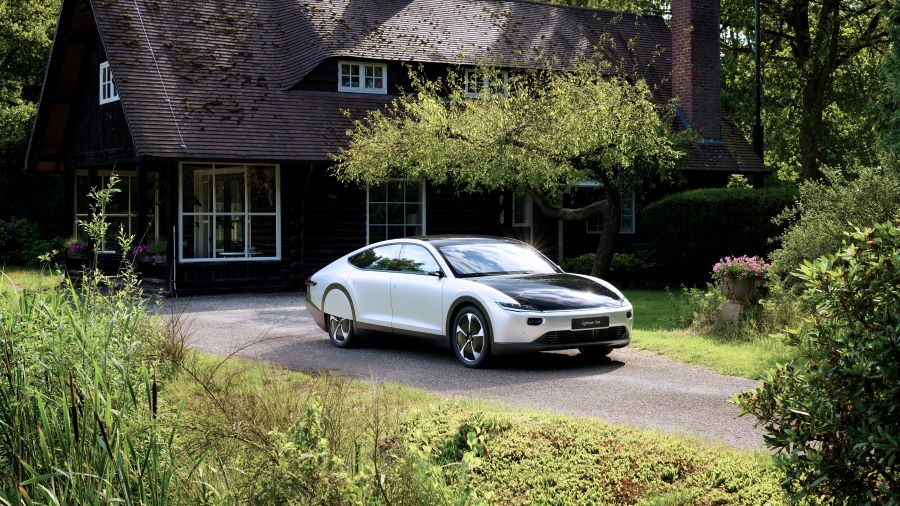
Lightyear One features five square metres of solar cells, integrated into the car’s roof and bonnet. The cells, which sit under safety glass, charge at a rate up to 12km/h in the sun. According to the company, someone driving the national average of 20,000km/year in the Netherlands would be able to harness about 40 per cent of their mileage from solar energy, with the rest coming from the grid.
A small battery delivers power to four independently controlled motors in the wheels, ensuring no energy is lost in transmission. Aluminium and carbon fibre components help keep the chassis weight down, with further efficiencies coming from aerodynamics.
Lightyear was founded by alumni of Solar team Eindhoven, serial winners of the Bridgestone World Solar Challenge. That competition’s relentless pursuit of efficiency has inspired the design of Lightyear One, and the company claims the best aerodynamic coefficient of any car on the market.
“We are solving these issues with what we call ultra-efficiency,” said Lex Hoefsloot, CEO and co-founder of Lightyear. “On one hand, that will lead to an exceptional range of 725km (WLTP) on a relatively small battery. On the other hand, it can charge directly from the sun because its energy consumption is much lower, generating up to 20,000km worth of energy per year.

“Moreover, all of the charging options out there become easier to use because you get a lot more range for the same amount of energy charged. So, effectively, you charge a lot faster from any power outlet. You can charge up to 400 km per night from ordinary 230V sockets. That’s great for road trips because you don’t need a charging infrastructure.”
According to Lightyear, its vehicle will be able to travel farther (in some cases almost three times as far) on a single KWH of power than any commercially available electric vehicle today.
https://www.youtube.com/watch?time_continue=97&v=jfoyXlH4eNM
Fast charging will provide up to 570km worth of energy within an hour, while regular public charging will deliver around 209km/h. A standard 230V outlet will charge at a rate of 35km per hour.
Current prices see Lightyear One listed at €149,000, with a reservation payment of €119,000 required. The company said the first 100 have already been reserved and delivery is expected in 2021. Further ahead, it sees the unit price dropping and the vehicle becoming a mainstay of autonomous fleets and shared vehicle services.

“Since new technology has a high unit cost, we have to start in an exclusive market,” said Hoefsloot. “The next models we plan to develop will have a significantly lower purchase price. In addition, future models will be provided to autonomous and shared car fleets, so the purchase price can be divided amongst a large group of users. Combined with the low operating costs of the vehicle, we aim to provide premium mobility for a low price per kilometre.”




Labour pledge to tackle four key barriers in UK energy transition
I'm all for clarity and would welcome anyone who can enlighten me about what Labour's plans are for the size and scale of this Great British Energy....